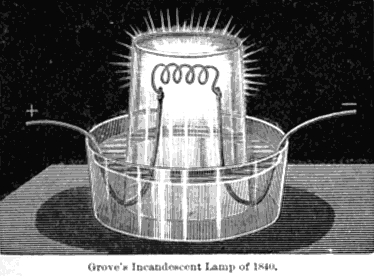In the first part of an entertaining set of articles from ILUMINAR, we read up on the “brief” history of artificial grow lighting.

The following is an article produced by a contributing author. Growers Network does not endorse nor evaluate the claims of our contributors, nor do they influence our editorial process. We thank our contributors for their time and effort so we can continue our exclusive Growers Spotlight service.
Finding information on when grow lighting really began is not as easy as you might think because it crosses into the realm of science publishing, where content is jealously guarded by publishers behind paywalls so obnoxious that almost nothing can be gleaned from a scientific paper before it’s been purchased for the princely sum of $20 a time, and that’s before you know how useful it is. So our argumentative researchers scoured the internet and realized that finding a starting point was even more distressing: How about we just start at the beginning, when plants started growing in response to light?
This suggestion of course came after a few adult beverages had been consumed and is just daft: I mean hell, that means that the history of grow lighting stretches back some 4.6 billion years ago, with the accretion of our Sun followed by a slow period of a few hundred million years before the planets conglomerated. Then we need to add another “tiny” chunk of hundreds of millions of years before anything resembling life peeked its head above the primordial soup, let alone anything resembling photosynthesis.
We eventually settled on a logical approach: Look at artificial lighting and track its historical trajectory. Of course, all artificial lighting started by burning things such as oil, gas, etc., but it wasn’t until the invention of the electrical arc lamp (a big arc of controlled lightning under a glass cover) in the early in the early 1800’s that the first viable electrical street lighting existed. The early electric arc lamps were never successful due to how inefficient and expensive they were, but the concept of a contained lamp as we know them today really began. It was followed not long afterwards with the introduction of incandescent lighting in 1835 and James Bowman Lindsay’s demonstration of a “constant electric lamp” in Dundee, Scotland, nearly forty years prior to some bloke named Edison, even if Edison started throwing patents around, thereby garnering all credit for the invention.
 Reads: Grove's Incandescent Lamp of 1840
Reads: Grove's Incandescent Lamp of 1840The first recorded incident electrical lighting being used to grow plants, surprisingly enough, dates back to 1861 when a Frenchman called Hervé Mangon published a scientific paper titled: “Production de la matière verte des feuilles sous l'influence de la lumière électrique.” For those of you that can’t speak French this roughly translates as: “Production of the green matter of the leaves under the influence of electric light” and was published in “Mallet-Bachelier (editors), Weekly reports of the sessions of the Academy of Sciences in Paris.”
From the 1860’s onwards there was a steady stream of research into artificial illumination of plants. Researchers regularly tested plants under recently-developed lamps. These lamps were generally based on the three prevailing lighting technologies at the time:
- Incandescent lighting spurred by the invention of Edison’s filament lamp in 1879.
- Open arc lighting, as mentioned earlier, typically involved the use of carbon rods.
- Gas discharge lamps, which have a long convoluted history stretching back to 1675.
Some of the earliest writings speculated upon indoor agriculture lighting’s commercial viability; “On the influence of electric light upon vegetation and certain physical properties involved” was produced by Carl Wilhelm Siemens (later knighted as Sir Charles William Siemens) and was published in the Proceedings of the Royal Society of London in 1880, where he also included an economic analysis of commercial production under electric light. The next 50-60 years of research and development were a frantic time in lighting technology, with numerous lighting technologies developing rapidly and our understanding of the basics of the electromagnetic spectrum and plant responses to it growing by leaps and bounds from the seeds of initial observations.
Author’s Note: Puns FULLY intended.
The earliest researchers used the oldest viable technology in carbon arc lamps, later moving on to incandescent and gas discharge technologies. Nevertheless, arc lamps were used extensively in research all the way into the 1940’s due to possessing a broader, bluish spectrum which also emitted high amounts of Ultraviolet light.
Incandescent lights were hugely important and also found their place; General Electric’s “Mazda” Tungsten Filament bulbs produced far more reds, infrared, and heat than other technologies at the time. Some clever nerds called J.M. Arthur & W.D. Stewart noticed that plants behaved oddly under this electric light; they discovered that elongated stem growth was caused by predominantly red spectra in their 1935 work “Relative growth and dry weight production of plant tissue under Mazda, Neon, Sodium and Mercury vapor lamps”. This research was conducted some 80 years before the vicious and bloody red/blue vs. full spectrum LED feuds of 2015 were fought across farmers forums everywhere on the internet.
 This is how I picture internet wars.
This is how I picture internet wars.Gas discharge lamps, the third of our trilogy of technologies, are even older than arc lamps and can trace their origins back to an observation by the French astronomer Jean-Felix Picard, who noticed that the empty space in his mercury barometer would glow as it moved when he was carrying it. Thirty years later, English scientist Francis Hauksbee demonstrated the first gas discharge lamp by electrically charging an evacuated glass globe containing a small amount of mercury. The system produced enough light that a person could read under it. This is, of course, was a far cry from the HID technologies of today and, in order to be accurate, we also need to turn to the father of the low pressure gas discharge tube for the closest facsimile to the lights we use today.
In 1857 a glassblower named Heinrich Geisser began constructing colorfully artistic cold cathode tubes using a mercury vapor pump that evacuated glass tubes to a level previously unattainable before filling them with noble gases which glowed different colors when a current was applied to them. He called them Geissler tubes and, in essence, they were the precursors to today’s neon lights. He also happened to design the basic principle behind today’s modern fluorescent lighting as well, aside from the fluorescent coating on the inside of the tube.
At this juncture it would be a fun detour to stop and tell you the amazing story of General Electric’s early twentieth-century douchebaggery, where they bought all of the patents for fluorescent technologies or sued the crap out of anyone who held any competing claims between 1927 and 1931, just to delay the rollout of fluorescent lights by some twenty years so. They didn’t want a more efficient technology to outcompete their older incandescent lights. As you can see, they fit the perfect example of how the lighting business is full of skullduggery. Sadly, we don’t have time the investigate this matter further, because we’re already over 1200 words and haven’t even dealt with High Intensity Discharge Lights yet!
Thus, we pause this history lesson for now. Part 2 will be with you at the same bat-time, same bat-channel soon.
Thanks
The ILUMINAR team.
10 Best Gift Ideas for Cannabis Connoisseurs and Growing Aficionados (2022)
December 7, 2022Developing and Optimizing a Cannabis Cultivation System
December 14, 2021Dealing with Insomnia: How Can CBD Help?
December 10, 2020Your Guide to Sleep and CBD
December 7, 2020
Do you want to receive the next Grower's Spotlight as soon as it's available? Sign up below!
Resources:
Want to get in touch with Iluminar? They can be reached via the following methods:
- Website: https://www.iluminarlighting.com/
- Email: sales@iluminarlighting.com

Do you have any questions or comments?

About the Author
Iluminar is a veteran lighting brand with growers behind the wheel. We have spent our years under lights as well. We have been in the industry for over 20 years and proud of it.